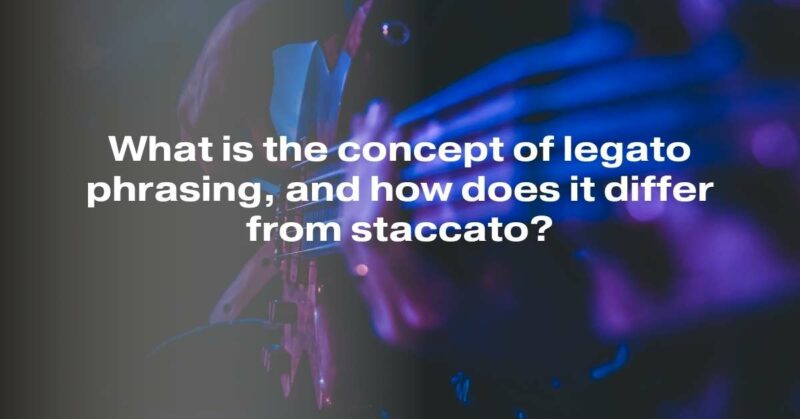The world of music is a vast and diverse landscape, with countless techniques and styles that allow musicians to convey a wide range of emotions and moods. In the realm of guitar playing, two fundamental concepts of phrasing stand out: legato and staccato. These two contrasting techniques are pivotal in defining the expressiveness of a guitarist’s performance. In this article, we’ll delve into the concept of legato phrasing and explore how it differs from staccato, shedding light on their unique characteristics and applications.
What is Legato Phrasing?
Legato, an Italian word meaning “tied together,” is a musical term that signifies smooth and connected playing. In the context of guitar playing, legato phrasing involves creating a seamless flow of notes by minimizing the separation between them. This technique is characterized by the absence of distinct pauses or breaks between individual notes, resulting in a fluid and melodic sound.
Key Elements of Legato Phrasing:
1. Hammer-Ons: A critical component of legato phrasing, hammer-ons involve playing a note, then using a finger to tap the fretboard and produce the next note without plucking the string again. This creates a smooth transition between notes and contributes to the legato effect.
2. Pull-Offs: Pull-offs are the opposite of hammer-ons. They involve playing a note, then “pulling” your finger off the string to sound the next note on a lower fret. Pull-offs are essential for creating the connected, flowing feel of legato playing.
3. Slides: Slides are another legato technique where you glide your finger up or down the fretboard while maintaining pressure on the string. This technique produces a continuous shift in pitch, further enhancing the legato phrasing.
4. Smooth String Changes: In legato playing, smooth transitions between strings are crucial. Players often use techniques like string skipping and careful finger placement to ensure that notes flow seamlessly from one string to another.
Legato phrasing is commonly associated with genres such as jazz, fusion, and progressive rock, where a fluid, expressive style is highly valued. Players like Joe Satriani, Steve Vai, and Allan Holdsworth are renowned for their mastery of legato technique.
What is Staccato Phrasing?
In stark contrast to legato, staccato is a technique that emphasizes short, detached, and percussive notes. The term “staccato” comes from the Italian word for “detached,” and it is employed to create a sharp, punctuated effect in music.
Key Elements of Staccato Phrasing:
1. Short, Accented Notes: Staccato playing involves producing notes with a precise, distinct attack and a short duration. This is achieved by releasing pressure on the fretboard or muting the strings immediately after the note is played.
2. Rests: Staccato phrasing often incorporates rests, which are brief silences between notes. These rests contribute to the rhythmic quality of staccato playing and add a dynamic, percussive element to the music.
3. Palm Muting: Palm muting is a technique where the palm of the hand lightly rests on the strings near the bridge, dampening their vibrations. This creates a muted, percussive sound characteristic of staccato playing.
Staccato phrasing finds its home in various musical genres, including classical, blues, rock, and pop. It is frequently used to add emphasis, create rhythmic patterns, and infuse energy into a performance.
Differences and Applications
The key difference between legato and staccato phrasing lies in the approach to note duration and articulation. Legato seeks to create smooth, connected lines with sustained notes, while staccato aims for short, separated, and accented notes.
1. Emotional Expression: Legato is often associated with conveying emotions and telling a musical story with a long, flowing narrative. Staccato, on the other hand, is more about precision, rhythm, and creating dynamic contrasts in a piece.
2. Genre Preferences: The choice between legato and staccato phrasing depends on the genre and the mood a guitarist wants to evoke. Legato is prevalent in genres that emphasize melody and virtuosity, while staccato is favored in rhythmic and percussive styles.
3. Versatility: A skilled guitarist can seamlessly switch between legato and staccato within a single composition, utilizing both techniques to add depth and complexity to their playing.
Conclusion
Legato and staccato phrasing are two essential tools in a guitarist’s arsenal, each offering a unique approach to musical expression. Whether you aim to create a smooth, melodic journey with legato or deliver a sharp, rhythmic punch with staccato, mastering these techniques will enhance your ability to convey a wide range of emotions and styles in your guitar playing. As with any aspect of music, practice, experimentation, and an understanding of context are the keys to becoming a proficient and expressive guitarist.

